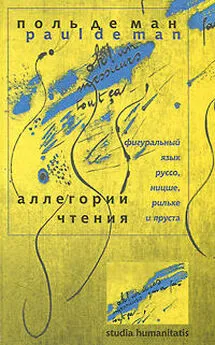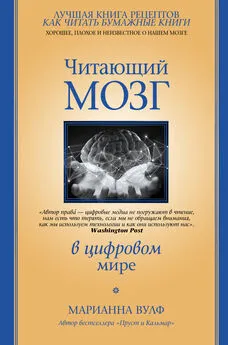Марианна Вулф - Пруст и кальмар. Нейробиология чтения
- Название:Пруст и кальмар. Нейробиология чтения
- Автор:
- Жанр:
- Издательство:ООО «Издательская Группа «Азбука-Аттикус»
- Год:2020
- Город:Москва
- ISBN:978-5-389-18966-9
- Рейтинг:
- Избранное:Добавить в избранное
-
Отзывы:
-
Ваша оценка:
Марианна Вулф - Пруст и кальмар. Нейробиология чтения краткое содержание
В этой книге, мгновенно завоевавшей мировую известность, видный американский нейробиолог Марианна Вулф исследует, как «открытая архитектура», пластичность нашего мозга помогает и мешает людям в их попытках научиться читать и обрабатывать письменный язык. Читателю предстоит увлекательное путешествие по временам и эпохам, знакомство с разнообразными иллюстрациями развития отдельного человека – от младенца, который слушает колыбельную, до настоящего эксперта – читателя произведений Пруста. Разобравшись, как эволюция и развитие чтения изменили само устройство человеческого мозга и суть нашей интеллектуальной жизни, мы поймем, что мы – это действительно то, что мы читаем.
В формате PDF A4 сохранён издательский дизайн.
Пруст и кальмар. Нейробиология чтения - читать онлайн бесплатно ознакомительный отрывок
Интервал:
Закладка:
34. Много лет назад мы с коллегой из штата Джорджия Робин Моррис и педагогом из Швейцарии Хиди Балли начали пятилетнее исследование развития скорости именования у детей с дислексией и без нее. Мы наблюдали детей до четвертого класса, а затем, когда вернулись к данным начала исследования, чтобы посмотреть, как развивались дети с дислексией, нас ожидало несколько сюрпризов. Отличия в скорости именования у детей, у которых позднее возникли нарушения чтения, бросались нам в глаза с их первых дней в детском саду. Эти дети не могли быстро называть символы – любые, но особенно буквы. Большинство детей с серьезными нарушениями чтения пошли в школу, уже имея проблемы как со скоростью поиска (обычно незаметными в устной речи), так и со скоростью обработки букв и испытывая трудности при выполнении требующих больше когнитивных усилий заданий с переключением наборов символов (RAS). Тесты RAS еще в детском саду очень хорошо предсказывали большинство случаев самых серьезных затруднений: дети не могли выполнить задания RAS с переключением наборов символов, хотя называли показанные им буквы и цифры по отдельности. Теперь, по данным многих исследователей, мы знаем, что эти различия в скорости именования или поиска обнаруживаются на всем протяжении детства и продолжаются во взрослой жизни. Нам известно также, что общая способность именования у совсем маленьких детей (до трех лет) может предсказать некоторые формы более поздних нарушений чтения и других расстройств научения, таких как синдром дефицита внимания. См., например, отличную работу Розмари Таннок об интригующих различиях в именовании цветов и объектов, которые имеются только у детей с проблемами внимания: R. Tannock, R. Martinussen , and J. Frijters (2000). Naming Speed Performance and Stimulant Effects Indicate Effortful, Semantic Processing, Deficits in Attention Deficit/Hyperactivity Disorder // Journal of the American Academy of child and Adolescent Psychiatry, 28. P. 237–252. См. также: M. Wolf (1986). Rapid Alternating Stimulus (R.A.S.) Naming: A Longitudinal Study in Average and Impaired Readers // Brain and Language, 27. P. 360–379; M. Wolf and M. Denckla (2005). RAN/RAS Tests (Rapid Automatized Naming and Rapid Alternating Stimulus Test). Austin, Tex.: Pro-Ed.
35. N. Geschwind (1965). Disconnexion Syndromes in Animals and Man.
36. M. Misra, T. Katzir, M. Wolf, R. Poldrack and A. Poldrack (2004). Neural Systems for Rapid Automatized Naming in Skilled Readers: Unraveling the RAN-Reading Relationship // Scientific Studies in Reading, 8 (3). P. 241–256.
37. B. McCandliss, L. Cohen , and S. Dehaene (2003). Visual word form area: Expertise for reading in the fusiform gyrus // Trends in Cognitive Science, 7. P. 293–299.
38. G. DiFilippo, D. Brizzolara, A. Chilosi, M. DeLuca, A. Judica, C. Pecini, D. Spinell , and P. Zoccolotti . Naming Speed and Visual Search Deficits in Disabled Readers: Evidence from an Orthographically Regular Language; V. N ä rhi, T. Ahonen, M. Aro, T. Lepp ä saari, T. Korhonen, A. Tolvanen , and H. Lyytinen (2005). Rapid Serial Naming: Relations between Different Stimuli and Neuropsychological Factors // Brain and Language, 92. P. 45–57.
39. P. T. Ackerman, R. A. Dykman , and M. Y. Gardner (1990). Counting Rate, Naming Speed, Phonological Sensitivity, and Memory Span: Major Factors in Dyslexia // Journal of Learning Disabilities, 23. P. 325–337; D. Amtmann, R. Abbott , and V. Berninger . Mixture Growth Models of RAN and RAS Row by Row: Insight into the Reading System at Work across Time // Reading and Writing; N. Badian (1995). Predicting Reading Ability over the Long Term: The Changing Roles of Letter Naming, Phonological Awareness, and Orthographic Knowledge // Annals of Dyslexia, 45. P. 79–86; D. Compton (2000). Modeling the Relationship between Growth in Rapid Naming Speed and Growth in Decoding Skill in First Grade Children // Journal of Educational Psychology, 95. P. 225–239; DiFilippo et al . Naming Speed and Visual Search Deficits in Disabled Readers; U. Goswami et al . (2002). Amplitude Envelope Onsets and Developmental Dyslexia: A New Hypothesis // PNAS, 99. P. 10911–10916; J. Kirby, R. Parilla , and S. Pfeiffer (2003). Naming Speed and Phonological Awareness as Predictors of Reading Development // Journal of Educational Psychology, 95 (3). P. 453–464; K. Pammer, P. Hanson, M. Kringlebach, I. Holliday, G. Barnes, A. Hillebrand, K. Singh , and P. Cornelissen (2004). Visual Word Recognition: The First Half Second // Neuroimaging, 22. P. 1819–1825; H. Swanson, G. Trainen, D. Necoechea , and D. Hammill (2003). Rapid Naming, Phonological Awareness, and Reading: A Meta-Analysis of the Correlation Literature // Review of Educational Research, 73. P. 407–440; M. Wolf, H. Bally , and R. Morris (1986). Automaticity, Retrieval Processes, and Reading: A Longitudinal Study in Average and Impaired Readers // Child Development, 57. P. 988–1000.
40. Geschwind . Disconnexion Syndromes in Animals and Man.
41. M. Blank and W. H. Bridger (1964). Cross-Modal Transfer in Nursery School Children // Journal of Comparative and Physiological Psychology, 58. P. 277–282; H. Birch and L. Belmont (1964). Auditory-Visual Integration in Normal and Retarded Readers // American Journal of Orthopsychiatry, 34. P. 852–861.
42. См., например: K. Pugh et al. (2000). The Angular Gyrus in Developmental Dyslexia: Task Specific Differences in Functional Connectivity in Posterior Cortex // Psychological Science, 11. P. 51–59.
43. E. Paulesu, U. Frith, M. Snowling, A. Gallagher, J. Morton , and R. S. J. Frackowiak (1996). Is Developmental Dyslexia a Disconnection Syndrome? Evidence from PET Scanning // Brain, 119. P. 143–157; E. Paulesu, J. Demonet, F. Fazio, E. McCrory, V. Chanoine, N. Brunswick, S. Cappa, G. Cossu, M. Habib, C. Frith , and U. Frith (2001). Dyslexia: Cultural Diversity and Biological Unity // Science, 291. P. 2165–2167.
44. E. Paulesu et al . Is Developmental Dyslexia a Disconnection Syndrome?
45. S. Shaywitz, B. Shaywitz, W. E. Mencl, R. K. Fulbright, P. Skudlarski, R. T. Constable, K. Pugh, J. Holahan, K. Marchione, J. Fletcher, G. R. Lyone , and J. Gore (2003). Disruption of Posterior Brain Systems for Reading in Children with Developmental Dyslexia // Biological Psychiatry, 52. P. 101–110.
46. См. обсуждение функциональной связности в статье: R. Sandak, W. E. Mencl, S. J. Frost , and K. R. Pugh (2004). The Neurological Basis of Skilled and Impaired Reading: Recent Findings and New Directions // Scientific Studies of Reading, 8 (3). P. 273–292.
47. B. Horwitz, J. Rumsey , and B. Donohue (1998). Functional Connectivity of the Angular Gyrus in Normal Reading and Dyslexia // Proceedings of the National Academy of Sciences, 95. P. 8939–8944.
48. P. G. Simos, J. Breier, J. Fletcher, B. Foorman, E. Bergman, K. Fishbeck , and A. Papanicolaou (2000). Brain Activation Profiles in Dyslexic Children during Non-Word Reading. A Magnetic Source Imagery Study // Neuroscience Letters, 290. P. 61–65.
49. J. D. E. Gabrieli, R. A. Poldrack , and J. E. Desmond (1998). The Role of Left Prefrontal Cortex in Language and Memory // Proceedings of National Academy of Sciences, 95 (3). P. 906–913.
50. S. Orton (1928). Specific Reading Disability – Strephosymbolia // Journal of the American Medical Association, 90. P. 1095–1099.
51. M. P. Bryden (1970). Laterality Effects in Dichotic Listening: Relations with Handedness and Reading Ability in Children // Neuropsychologia, 8. P. 443–450.
52. E. B. Zurif and G. Carson (1970). “Dyslexia in Relation to Cerebral Dominance and Temporal Analysis // Neuropsychologia, 8. P. 351–361.
53. K. Rayner and F. Pirozzolo (1977). Hemisphere Specialization in Reading and Word Recognition // Brain and Language, 4 (2). P. 248–261; K. Rayner and F. Pirozzolo (1979). Cerebral Organization and Reading Disability // Neuropsychologia, 17 (5). P. 485–491.
54. G. Yeni-Komshian, D. Isenberg , and H. Goldberg (1975). Cerebral Dominance and Reading Disability: Lateral Visual Field Deficit in Poor Readers // Neuropsychologia, 13. P. 83–94.
55. P. Turkeltaub, L. Gareau, L. Flowers, T. Zeffiro and G. Eden (2003). Development of Neural Mechanisms for Reading // Nature Neuroscience, 6. P. 767–773.
56. S. Shaywitz, B. Shaywitz, K. Pugh, W. Mencl et al . (1998). Functional disruption in the organization of the brain for reading in dyslexia // Proceedings of the National Academy of Sciences, USA, 95. P. 2636–2641; S. Shaywitz (2003). Overcoming Dyslexia.
57. S. Shaywitz, B. Shaywitz, W. E. Mencl, R. K. Fulbright, P. Skudlarski, R. T. Constable, K. Pugh, J. Holahan, K. Marchione, J. Fletcher, G. R. Lyon , and J. Gore (2003). Disruption of Posterior Brain Systems for Reading in Children with Developmental Dyslexia // Biological Psychiatry, 52. P. 101–110.
58. J. B. Demb, R. A. Poldrack , and J. D. E. Gabrieli (1999). Functional Neuroimaging of Word Processing in Normal and Dyslexic Readers // Converging Methods for Understanding Reading and Dyslexia. R. M. Klein and P. A. McMullen (eds.). Cambridge, Mass.: MIT Press; Habib . The Neurological Basis of Developmental Dyslexia; P. H. T. Leppanen and H. Lyytinen (1997). Auditory Event-Related Potentials in the Study of Developmental Language-Related Disorders // Auditory and Neuro-Otology, 2. P. 308–340; H. Lyytinen (2003). Presentation of Finnish Longitudinal Study Data, International Dyslexia Association: Philadelphia, Pa., October; Pammer et al. Visual Word Recognition: The First Half Second; J. M. Rumsey (1997). Orthographic Components of Word Recognition: A PET-rCBF Study // Brain, 120. P. 739–759; R. Salmelin and P. Helenius (2004). Functional Neuro-Anatomy of Impaired Reading in Dyslexia // Scientific Studies of Reading, 8 (4). P. 257–272; Sandak et al . The Neurobiological Basis of Skilled and Impaired Reading: Recent Findings and New Directions; Simos et al . Age-Related Changes in Regional Brain Activation during Phonological Decoding and Printed Word Recognition; Turkeltaub et al . Developmental of Neural Mechanisms for Reading.
Читать дальшеИнтервал:
Закладка:










